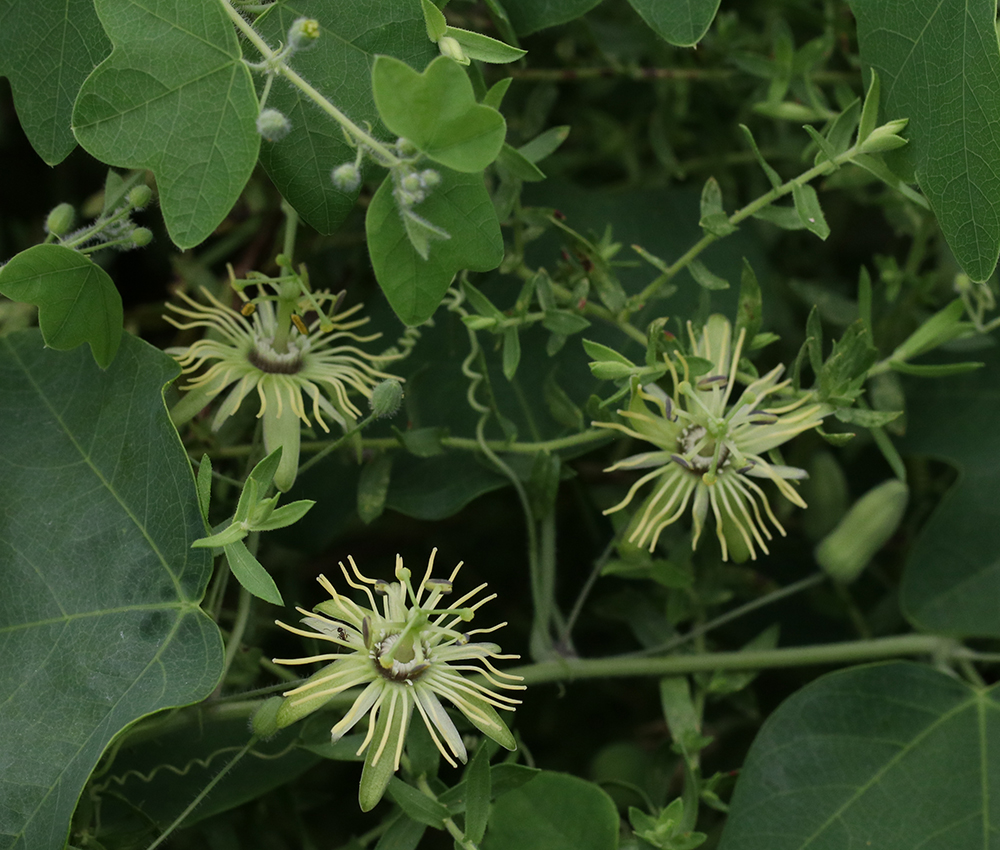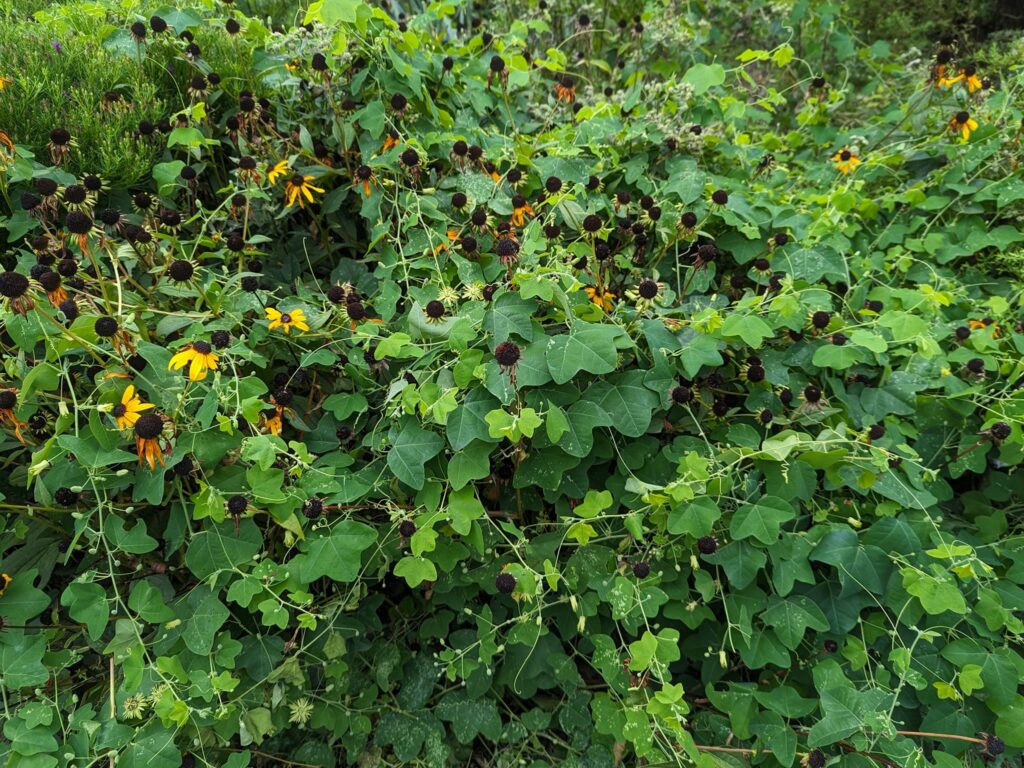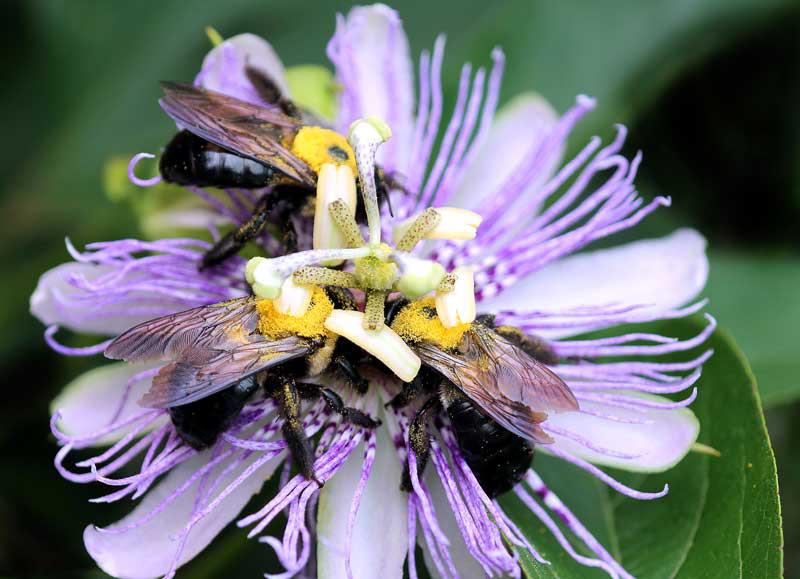Critter Spotlight: Passionflower Bee
go.ncsu.edu/readext?951270
en Español / em Português
El inglés es el idioma de control de esta página. En la medida en que haya algún conflicto entre la traducción al inglés y la traducción, el inglés prevalece.
Al hacer clic en el enlace de traducción se activa un servicio de traducción gratuito para convertir la página al español. Al igual que con cualquier traducción por Internet, la conversión no es sensible al contexto y puede que no traduzca el texto en su significado original. NC State Extension no garantiza la exactitud del texto traducido. Por favor, tenga en cuenta que algunas aplicaciones y/o servicios pueden no funcionar como se espera cuando se traducen.
Português
Inglês é o idioma de controle desta página. Na medida que haja algum conflito entre o texto original em Inglês e a tradução, o Inglês prevalece.
Ao clicar no link de tradução, um serviço gratuito de tradução será ativado para converter a página para o Português. Como em qualquer tradução pela internet, a conversão não é sensivel ao contexto e pode não ocorrer a tradução para o significado orginal. O serviço de Extensão da Carolina do Norte (NC State Extension) não garante a exatidão do texto traduzido. Por favor, observe que algumas funções ou serviços podem não funcionar como esperado após a tradução.
English
English is the controlling language of this page. To the extent there is any conflict between the English text and the translation, English controls.
Clicking on the translation link activates a free translation service to convert the page to Spanish. As with any Internet translation, the conversion is not context-sensitive and may not translate the text to its original meaning. NC State Extension does not guarantee the accuracy of the translated text. Please note that some applications and/or services may not function as expected when translated.
Collapse ▲For 15 years I have enjoyed observing the many pollinators that forage on the native passionflowers in my Pollinator Paradise Demonstration Garden. North Carolina is home to two native passionflower species: purple passionflower (Passiflora incarnata) and the lesser known yellow passionflower (Passiflora lutea). Both species are found throughout the state from the mountains to the coastal plain.

Purple passionflower bloom. Photo by Debbie Roos.

Yellow passionflower blooms. Photo by Debbie Roos.
I have both species in the pollinator garden and have long admired their exquisitely structured blooms. Purple passionflower (also called maypop) has an edible fruit and its leaves and flowers are prized by herbalists and used for medicines. Both species are host plants for fritillary butterflies and attract many pollinators. The plants are perennial herbaceous vines and come back from roots and also by seed. They can be trained on a trellis or planted as a groundcover.
Both species of passionflower can be quite aggressive in the garden, using their tendrils to climb up other plants and in some cases completely covering them like a native version of kudzu. I regularly thin out the vines throughout the summer months when they become overly exuberant.

Yellow passionflower vines cover a stand of orange coneflower in late July. Photo by Debbie Roos.
The primary pollinators of purple passionflower are the carpenter bee and the honey bee. Only occasionally have I seen bumble bees on purple passionflower.

Carpenter bees on purple passionflower. When you see carpenter bees that have a yellow thorax completely covered in pollen, you know you have purple passionflower in the area. Carpenter bees are large enough so that when they are sipping nectar at the base of the corolla, their thorax scrapes under the pollen-covered anthers. Photo by Debbie Roos.

Honey bees on purple passionflower. Photo by Debbie Roos.

Bumble bee on purple passionflower. Photo by Debbie Roos.
Yellow passionflower blooms are slightly smaller than a quarter and resemble miniature yellow-green versions of purple passionflower. The primary pollinators I see on yellow passionflower are various wasps and also honey bees but they are also visited by native bees and syrphid flies.

Yellow passionflowers blooms are tiny, smaller than a quarter! Photo by Debbie Roos.

Golden-reined digger wasp on yellow passionflower. Photo by Debbie Roos.

Honey bee on yellow passionflower. Photo by Debbie Roos.

Katydid wasp on yellow passionflower. Photo by Debbie Roos.
Here in the piedmont, purple passionflower starts blooming in May followed by yellow passionflower later in June; both species will bloom into late October.
I was so excited in late July to observe a small black bee I had never seen before on a yellow passionflower bloom! It turned out to be an uncommon species, the passionflower bee (Anthemurgus passiflorae). This solitary ground-nesting native andrenid bee is monolectic, meaning it only collects pollen from a single species, in this case the yellow passionflower. The female carries the pollen on scopa (branched hairs) on her hind legs, then packs the pollen into a flattened mass in underground tunnels and lays an egg on it for the larva to feed on.

Passionflower bee collecting pollen on yellow passionflower. Photo by Debbie Roos.

The passionflower bee collects the bright yellow pollen from the yellow passionflower bloom and puts it in the branched hairs on her hind legs to take back to the nest. Photo by Debbie Roos.
Now every time I see the yellow passionflower I keep an eye out for the tiny passionflower bee. Knowing about this uncommon species has even impacted my management of passionflower. I am more inclined to let it go where it wants to go knowing it is so important to this native pollinator!


